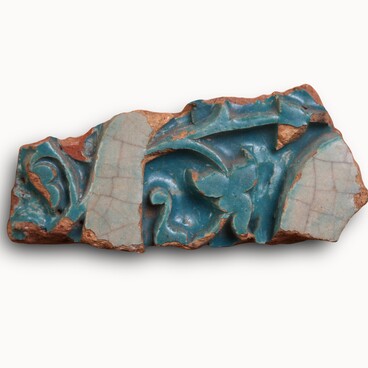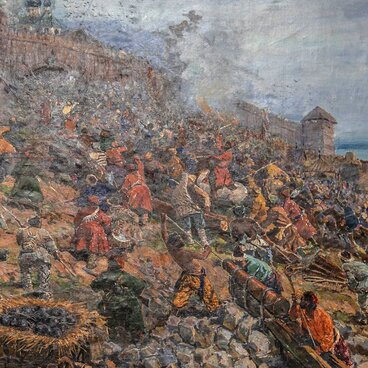A tapestry is a hand- or machine-woven, lint-free rug on which craftsmen recreated pictures on various subjects. In Russian the tapestry got its name “gobelin” from the Frenchman Gilles Gobelin, who founded a factory near Paris and started a business dyeing wool, but eventually mastered the production of woven paintings.
The products of this factory were highly valued and used to decorate palaces and family estates of many influential nobles and kings. The tapestry was made by copying the design from a model on cardboard, which was made to the life-size of the future product.
Tapestries featured biblical and mythological subjects, as well as hunting themes and animalistic ones, depicting a wide variety of animals, birds, flower compositions, palaces and castles.
In Russia, the term “gobelin” came into use in the 18th century, during the reign of Peter the Great. It was at that time that the first workshop producing paintings on fabric was founded in Saint Petersburg.
The Saint Petersburg tapestry manufactory was located in Ekateringhof from 1717. There, future Russian tapestry artisans were taught the specific weaving work by French masters from the Royal Tapestry Manufactory, who were hired for five years in 1716.
As the local traditions were developing, tapestry portraits of royalty and nobles were gaining popularity. They became the hallmark of Russian production. In Tsaritsyn, tapestries were very popular. In the rooms of merchant mansions there were landscapes on fabric and the same old hunting scenes. It was not uncommon for artisans to have images of children in their works, as it was considered a symbol of prosperity.
Experts believe that the tapestry from the collection of the Volgograd Regional Museum of Local History was commissioned by the Russian industrialist and collector Aleksey Vikulovich Morozov to decorate his Moscow house.
The products of this factory were highly valued and used to decorate palaces and family estates of many influential nobles and kings. The tapestry was made by copying the design from a model on cardboard, which was made to the life-size of the future product.
Tapestries featured biblical and mythological subjects, as well as hunting themes and animalistic ones, depicting a wide variety of animals, birds, flower compositions, palaces and castles.
In Russia, the term “gobelin” came into use in the 18th century, during the reign of Peter the Great. It was at that time that the first workshop producing paintings on fabric was founded in Saint Petersburg.
The Saint Petersburg tapestry manufactory was located in Ekateringhof from 1717. There, future Russian tapestry artisans were taught the specific weaving work by French masters from the Royal Tapestry Manufactory, who were hired for five years in 1716.
As the local traditions were developing, tapestry portraits of royalty and nobles were gaining popularity. They became the hallmark of Russian production. In Tsaritsyn, tapestries were very popular. In the rooms of merchant mansions there were landscapes on fabric and the same old hunting scenes. It was not uncommon for artisans to have images of children in their works, as it was considered a symbol of prosperity.
Experts believe that the tapestry from the collection of the Volgograd Regional Museum of Local History was commissioned by the Russian industrialist and collector Aleksey Vikulovich Morozov to decorate his Moscow house.


